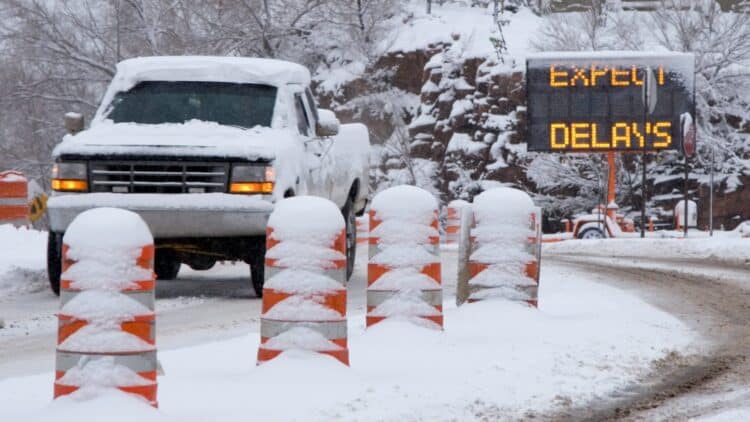It may be Fall according to our calendars, but winter hasn’t kept us waiting in the West Coast. A powerful winter storm surprised California on October 14 and 15. This early date has caused some concern among authorities. In fact, the National Weather Service issued a winter storm warning. This type of advisory is not just any alert, but a serious warning for those who are on the road.
Mountainous areas were facing snow, while coastal areas were facing other types of danger. It may not rain on the beach, but torrential rains always threaten flooding and mudslides in lower-lying areas.
The heart of the storm
The most affected area in California was the central mountain range, which saw up to 18 inches of snow. The area south of Interstate 80 (and I-80) was the most affected. But it didn’t just affect California. In Nevada, the storm focused on the picturesque Ruby Mountains and the East Humboldt Range in Elko County.
Elevations between 5,500 and 6,500 feet make snowfall very common. Below that elevation, it mainly rained. This snowfall caught travelers off guard, with the heaviest accumulations occurring during the night of Tuesday and early Wednesday, October 15. This meant that the roads became very difficult just in time for the morning commute to work. That is why the NWS did not hesitate to warn about the risks of traveling.
Double danger: snow and mud
The first snowfalls always pose an additional risk. At the beginning of the season, snow tends to be wetter and denser. Believe it or not, this snow is much heavier than powder snow, and can make tree branches break off and cause widespread power outages in the worst moment.
While the peaks were covered in snow, the southern United States faced water chaos from torrential rains. The greatest danger is concentrated in hillside areas, especially in neighborhoods such as Pacific Palisades and Mandeville Canyon, which had already been devastated by recent fires. The burned vegetation can no longer hold the soil in place, so when torrential rain falls, it washes away. This is what causes dangerous mudslides. The risk was so great that authorities ordered the immediate evacuation of some 115 homes.
Meanwhile, in Nevada, roads such as State Route 229 and the access road to Lamoille Canyon were covered in snow and virtually impassable.
Danger on the road
In California, major highways such as I-80 and Highway 50 activated chain controls. In order to travel on them, certain vehicles had to install chains or cables on their tires.
Driving without them in these conditions is illegal and extremely dangerous, like trying to run on an ice rink wearing shoes with smooth soles (there is no grip and you end up sliding off the road). Another major road hazard is “black ice.”
This ice is almost invisible, forming when surface water freezes quickly. It is especially treacherous on structures such as bridges and overpasses, as cold air circulates above and below these structures, freezing them first—unlike normal roads, where the ground retains residual heat better and does not vary in temperature as easily.
All it takes is one car to skid for a traffic jam or a pile-up to occur. That’s why weather agencies are adamant: if you don’t have chains on your tires, don’t even think about driving on these mountain roads.
If you are going to be driving in snow and heavy rain, we strongly advise you to always keep your gas tank more than half full. Before you start driving, use a scraper to remove all snow and ice from the hood, roof, lights, and windows. You should also carry an emergency kit in the trunk with a small shovel, thick gloves, water, and non-perishable food.

